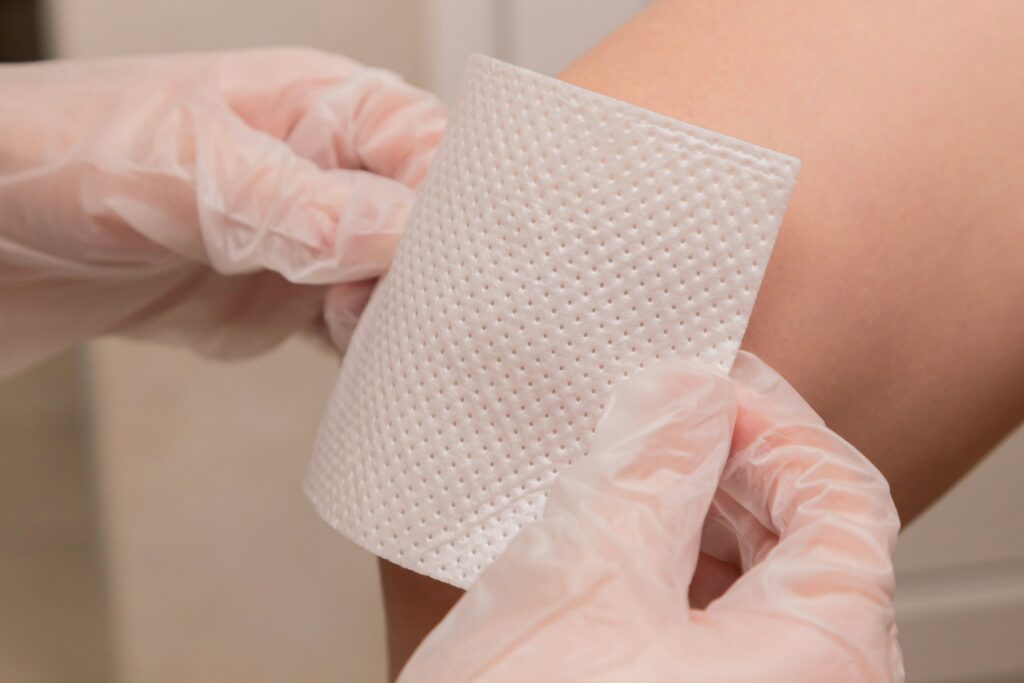Tackling ageing population challenges in Romania
The pressures on Romania’s under-resourced healthcare system are mounting and the traditionally informal nature of access to healthcare in some communities risks compounding the problem. An ageing population evidences a high instance of diabetes, which ultimately leads to patients with chronic wounds needing regular, sometimes daily, dressing and redressing.
At the same time, the vulnerable elderly are also beginning to display an increasing degree of pathogen resistance to antibiotics widely used in wound dressings. In recent years antibiotics have been overprescribed and overused and are no longer as effective as they once were.
Romania is not alone in facing these ageing population challenges; we need a better, and ideally cheaper, way of dressing, treating and healing wounds to prevent infection.
Bio-resources in medical gauzes regenerate human tissue
SPD STAR has been manufacturing cotton wool and gauze products for the medical devices industry since 2003. The company is located near Cluj-Napoca, Romania's second-largest city, and the historical capital of Transylvania. Cluj has a growing reputation for innovation, most recently in IT. An attractive place to live and work, it is home to many of Romania's most successful SMEs.
In 2019, SPD STAR recognised that it needed to innovate to retain and grow its market share as the demand for its traditional cotton wool products declined. Therefore, SPD STAR began to invest in the development and commercialisation of a range of more efficient, lower-cost wound dressings. It also recognised that it could not do so alone. Thus began a three-year research and development project that has resulted in a range of natural products to improve healing and reduce side effects without antibiotics or risk of pathogen resistance.
Known as NonActivPans, the dressings work by exploiting the properties of bio-resources like cattle, donkey, sheep and rabbit skins, as well as fish scales, to regenerate damaged human tissue. Blended with bioactive agents, including lemon balm, dill, ginger, cumin, lavender and oak extracts, together, Anamaria Mosutiu, Compliance, Quality and Project Manager at SPD STAR explains, the ingredients form powerful molecular associations at low concentrations.
The dressings are highly viscous and easily spun. This allows the manufacture of dressings with two or three times the normal contact surface area and a corresponding increase in efficiency. And because the indigenous bio-resources generally have few other uses and are often regarded as waste, the dressings can be manufactured cheaply.
"It is not only the bio-resources that are different. The strength and structure of the spun material in the dressing is just as important. It is like the scaffolding that lets the rebuilding take place." – Mosutiu
Combining complementary skills beyond borders
If the theory sounds simple, the science behind it is anything but. The project's success is the product of the combined knowledge, skills and experience of many collaborators from five organisations in Romania and Lithuania.
Twenty-eight people were directly involved in the international project, including pharmacists, biologists, engineers, doctors, surgeons, veterinarians, environmentalists and economists, all led by internationally recognised specialists in the study of medical devices, biopolymers and environmental protection.
The diversity of the people, collaborating organisations and the extent of the collaborations facilitated by Eureka was unusual in its scope, but in Mosutiu's own words: "entirely natural".
While SPD STAR brought expertise in wound healing certification and quality standards, MB Biofita in Lithuania took responsibility for the necessary research in the synthesis of biologically active medicinal plants. Their neighbours at Kaunas University of Technology (Lithuania) worked on the electrospinning of dressings with high protein content alongside the National University of Science and Technology Politehnica Bucharest who helped to set the parameters of the electro-spinning and its antioxidant and structural properties for efficient active substance delivery.
The National Institute for Textiles and Leather (INCDTP) in Bucharest meanwhile worked on selecting and optimising those indigenous bio resources best suited to spinning into nanostructures with increased contact surfaces for better absorption and transfer of the active substances. The scaffolding, in other words, of Mosutiu's analogy.
A universal dressing solution to a local problem
As well as the impressive scale of the collaboration, the project is also an example of how the search for a solution to a local problem for wound care can result in a universal application.
SPD STAR's commercial need to invest in innovation answered a local market need born of a particular set of historical and socio-economic circumstances. However, pathogen resistance is a growing global healthcare issue and is increasingly recognised as a factor in the reemergence of infectious diseases like typhoid.
"I am happy that we have made a product with a real competitive advantage, but I am also proud of what we have done for Romania, for Europe and our ageing societies." – Mosutiu
Were you inspired by this story and have a project idea you want to realise?
Through our funding programmes, national/regional funding bodies support SMEs, large companies, universities and research organisations conducting R&D and innovation projects together beyond borders to achieve great results. Learn more about our programmes and discover whether we have a funding opportunity for your organisation.
